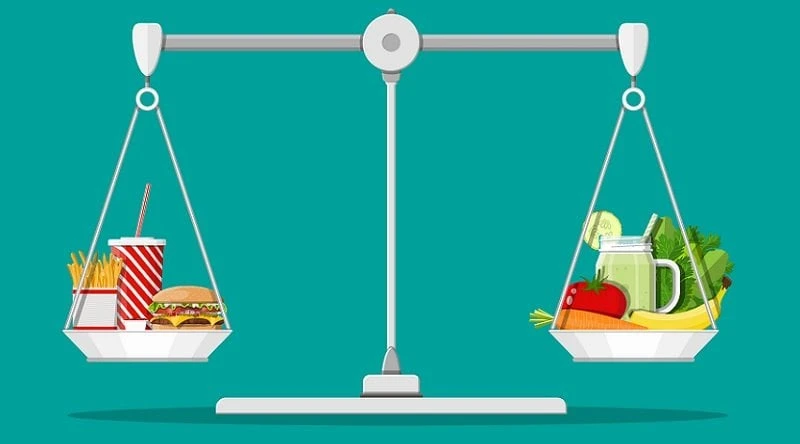by Rick Goldman
Fresh pasta gives you a different experience compared to dry ones when it comes preparing and cooking. After the pasta dough has been cut into desired shapes, you can cook them immediately without drying. You can also plan to dry for later use. Here is the guideline to help you cook fresh pasta.
Contents

Fresh pasta contains eggs and soft wheat flour while dry pasta is made with durum flour. The fresh pasta is more moist and tender and cooks quickly for about ½ an hour. You can pair fresh pasta with a light sauce like butter or cream. Dry pasta tends to go better for tomato sauces.
Making fresh pasta may seem simple, but it is a tedious task. The first step is mixing flour, ¾ of the egg mixture and 1 teaspoon of salt in a food processor. Form large crumbs which when squeezed, they form a dough. Knead the dough for one minute onto a lightly floured surface until it becomes nice and smooth. Cover it for 30 minutes with cling film.
Next, cut a piece of the dough and feed it in your pasta machine while the rest is still covered. You can also use a rolling pin to roll the dough to a thin layer if you don’t have a machine. Pass the dough through the pasta machine one notch. Repeat the process until you have a smooth sheet of pasta.
Cut the pasta into your desired shape to make spaghetti, pappardelle, linguine or filled pasta. You need to dust in flour and hang until it dries. Store the paste in a sealed container in the fridge as long as you want.
To dry fresh pasta, you need to spread it on a large baking sheet in a single layer. Leave the paste to dry for 12 to 24 hours while turning and stirring it. You can use a fan to quickly and evenly dry pasta. Ensure you don’t use much flour if it is hot in your home because humidify might cause issues.
When the pasta is dry, store it in an airtight room. You need to put it in containers and freeze it. It is easy to make a large amount of fresh pasta and freeze them. Avoid making and drying pasta during humid conditions if you aren’t going to cook it fresh or freeze it.
To cook fresh pasta properly, you need to follow the below guidelines. It will guide you from filling the pot with water to serving with sauce.
Use a tall pot to give the pasta enough room to cook. When you use a shallow pot, the paste pieces tend to stick together. Also, the amount of water required is essential. Fill the pot to ¾ full with cold water to allow the pasta to “swim” freely.
You may think salt is unnecessary, but it is an essential step. The salt adds flavour from inside out, brings more taste to food, and does not need to rely on the sauce to give the flavour. Add the salt once the water boils. It is not advisable to add oil as it makes the pasta slippery and sauce will not stick.
Measuring pasta can be tricky. A cup of cooked pasta is perfect for one person. One packet of pasta can feed 4 to 6 people.
You need to stir the pasta after adding to the boiling water to prevent the pasta pieces from sticking together. With the help of pasta, a mixing tool will grab the pieces and pull them apart. A pair of tong can also hold and drag the pasta to ensure the pieces don’t stick together.
The water slows down once the pasta is added but comes to boil full boil. When you cook the pasta in a simmer, it will become mushy and stick together.
It is necessary to taste a piece of pasta towards the end of cooking to see if you have achieved your desired al dente. No one wants the pasta to be mushy and also hard inside. You need to ensure the pasta is firm enough when bitten and softer outside.
Don’t drain all the pasta water if you want to make the sauce. The pasta water helps thicken the sauce and also aid in clinging the sauce to the pasta. Plus, it loosens the pasta allowing the sauce to distribute evenly. The pasta water acts as a remedy for a thick sauce. With ½ a cup will do wonders.
Remove the pasta from hot water after it has finished cooking. You can place the pasta in a colander set. Don’t rinse the pasta since there is a layer of starch left on the pasta, which adds flavour. Additionally, it thickens the sauce. Use a large tong or pasta fork to prevent tearing delicate pasta when removed in the water.
Place the sauce in a large pan to allow the sauce to adhere to the pasta while cooking. Put the pasta for 2 minutes and stir it to the sauce. Toss the pasta and sauce over high heat for some minutes until it is ready.
Having gone through the tips for cooking pasta, you are ready to prepare the dish. Here are the steps:
Fill the pot with 4 cups of water and cover it to boil over high temperature.
When the water boils, add a teaspoon of salt to give the past a flavour
Add the pasta when the water comes to boil. Stir the pasta with a pasta spoon to avoid the pieces from sticking together. Wait for the water to boil again.
For fresh pasta, ensure it cooks for 3-5 minutes to achieve the al dente results.
Keep stirring the pasta often to separate the pieces from each other or to the pan.
Remove a piece of pasta to check if al dente or chewy texture has been achieved. If not yet, give it some more minutes to reach the firm and tender texture.
Toss the pasta in the sauce and serve.
There are three simple steps to help you keep your pasta fresh.
After making the pasta, dust them with flour to avoid sticking together. Divide the pasta into portions to make it easy to work with. It is necessary to shape long pasta and dry for a ½ hour.
Place the fresh pasta in a container in the freezer. Keeping it in the refrigerator tends to alter the texture and flavour.
When you want to cook your pasta, take it from the freezer and drop into a pot of boiling water. Remember to put some salt in the water and stir the pot to avoid the pieces from sticking. In a few minutes, it will be ready to be served.
If you are planning to make fresh pasta, this article will guide you on storing and cooking fresh pasta with ease. In just 3 to 5 minutes, you will have your fresh pasta ready to be tossed with sauce. You are ready to enjoy your pasta.
 |
 |
 |
 |
 |
 |
 |
 |

About Rick Goldman
Rick Goldman's grandpa was a captain of a California coast cruise. This afforded Rick the luxury of traveling to exciting places along the Pacific Coast as a young boy. He got to try different, exotic foods on these journeys - something he really enjoys blogging about from his grandpa's beautiful garden home today.
Check for FREE Gifts. Or get our Free Cookbooks right now.
Disable the Ad Block to reveal all the recipes. Once done that, click on any button below
 |
 |
 |
 |